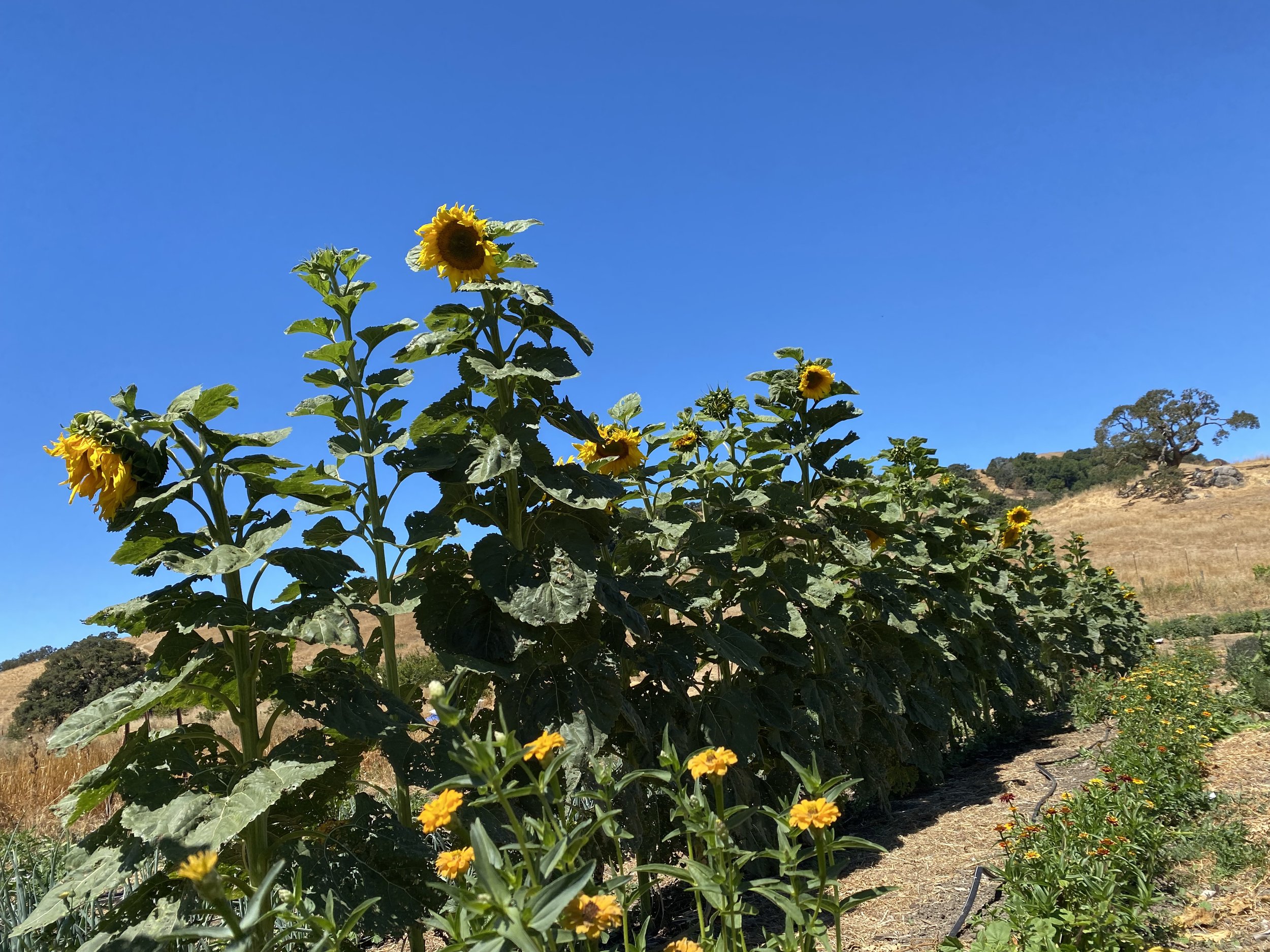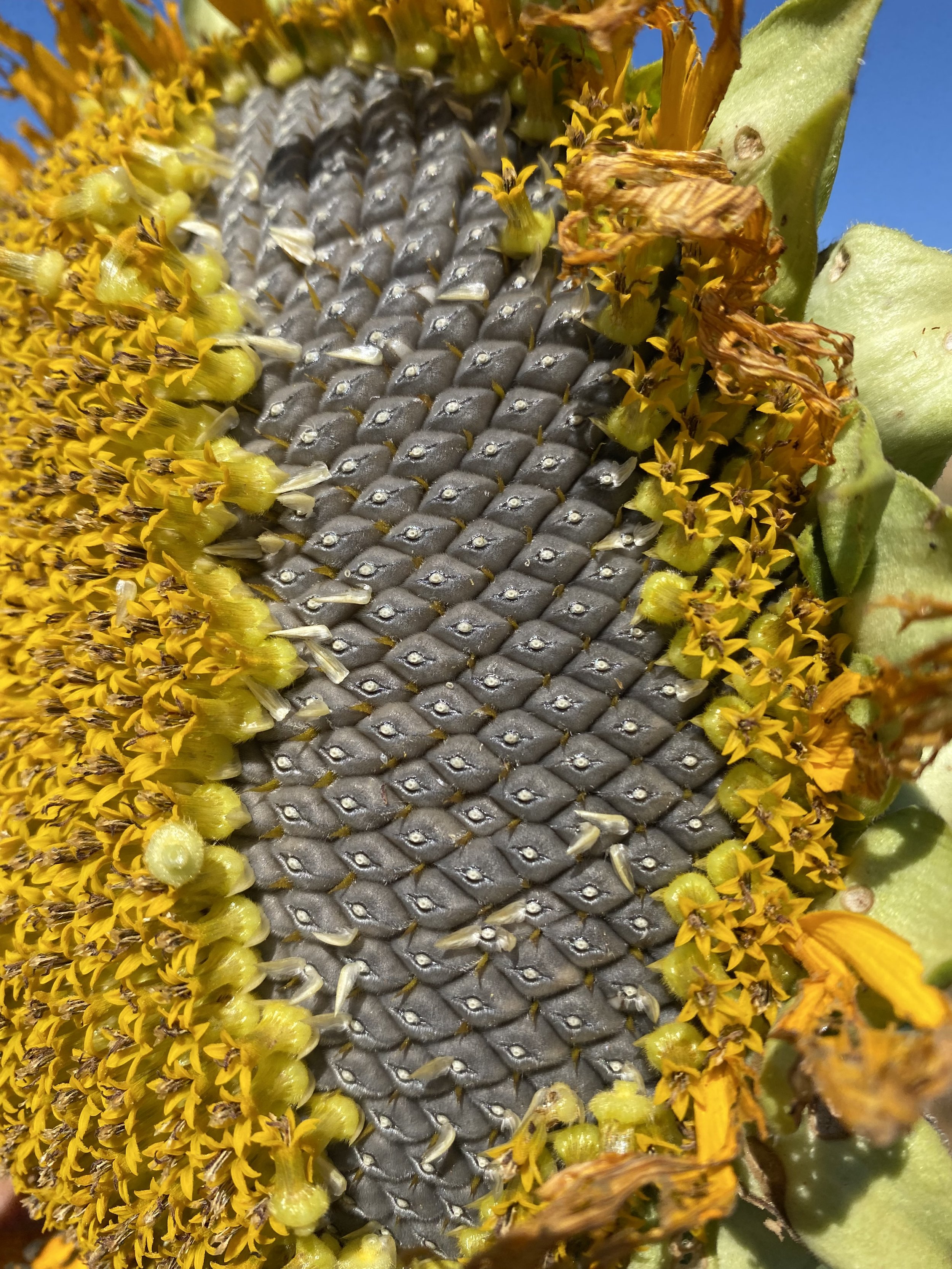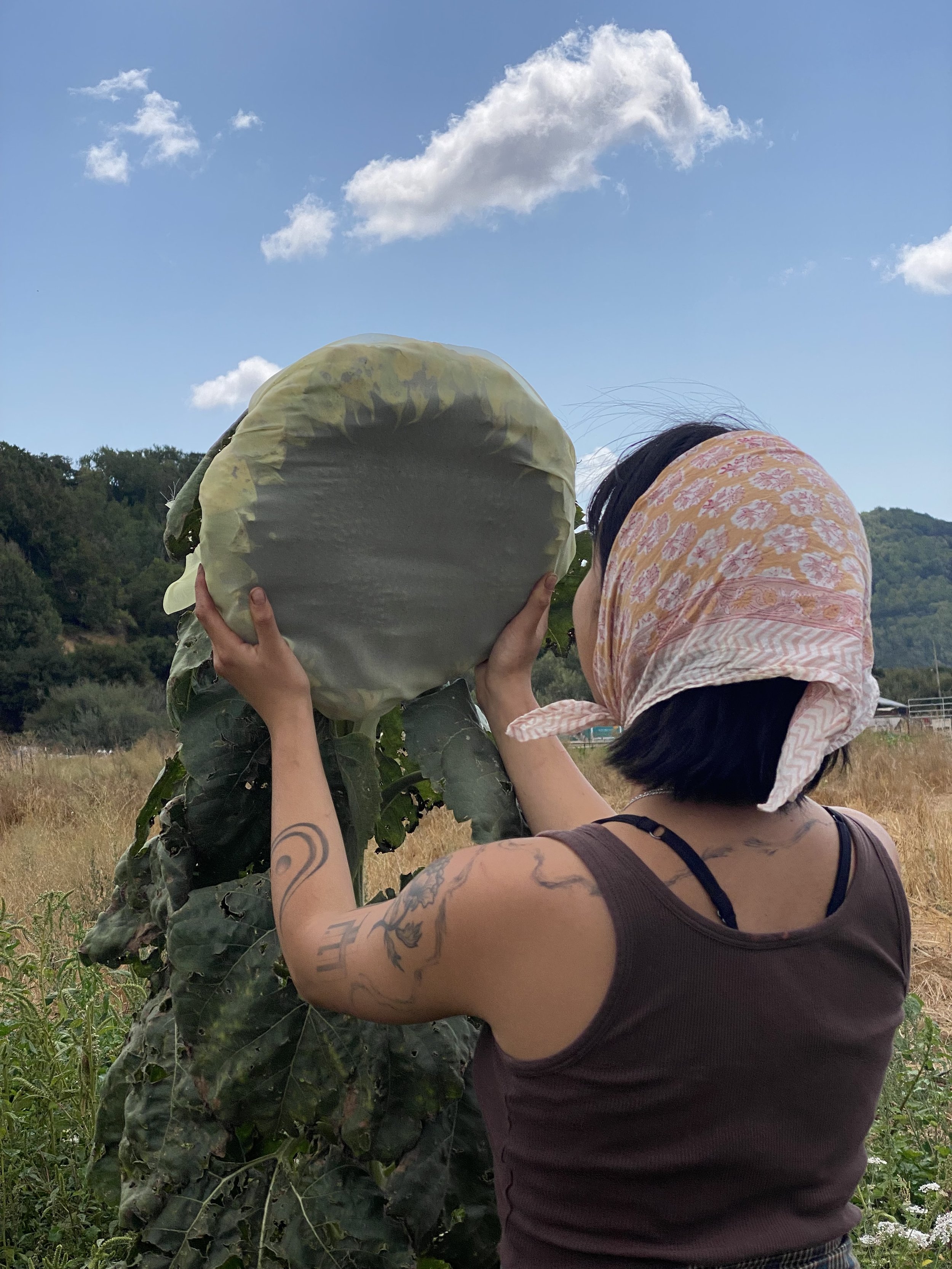
Arevatsaghik “Medzmama”- Reyhan Herb Farm
Every time I walked out into the field last year, I stopped to greet the Grandmother sunflower who was waiting at the beginning of the sunflower row. She was often nodding hello to whomever came by: me, the other farmers, the birds, the visitors, the cars on the road. The sunflowers were gracious hosts. They were dripping with bugs last year, especially cucumber beetles who loved to feast on their pollen and their delicate outer petals, and then later yellowjackets that harvested their golden sap. They towered over us humans, and then bent over with age as their heads swelled with seeds, soon looking down at us affectionately, caringly, considerately. I even sometimes felt like there was a hint of judgement in their stare, which I wrote off as the same concern any thoughtful and loving grandparent would have (if their grandchild decided to take up farming, in this economy). Unsurprisingly, the story that accompanied these seeds was also a story about elders. Scroll down to read about it!
These seeds are super easy to grow. Plant them directly in the ground when the weather has warmed up a bit in the spring, and water them every few days until they sprout. At this point, you can experiment with less watering. I grew some of these plants with minimal water, just at the beginning of their lives, and they did produce seed, although they were much smaller in stature than those who were watered more regularly.
As the sunflower seeds developed, I became obsessed with brushing off the disk flowers in the middle of the head with my hand to reveal the hundreds of seeds developing within. I learned, however, that doing so left the seeds even more vulnerable to the many birds who wanted to eat them. To remedy that, I covered the heads with a veil of tulle to protect the seeds, unintentionally giving an even-more grandmotherly look to each of them. The look of Mamani in her modest roosari (head covering) when she steps out to run to the store.
Harvest the seed by allowing the seed head to dry down, either on or off the plant (if the bird/pest pressure is too high, you can cut off the seed heads to dry them indoors). Once the head is mature, you can either pluck out the seeds, or you can whack the head with a stick or broom, and the force will loosen and expel the most mature seeds. You’ll find that some seeds stay embedded in the head, and most often those are the immature or unfertilized seeds towards the middle of the head.
It’s a pleasure to grow these seeds from and for my Armenian friends, and for anyone else who wishes to grow them. I hope that this seed brings you a feeling of being nurtured by your homeland, who loves you very much. Freedom for Armenia, and for Indigenous people everywhere.
Farmer Sama :)
Sunflower seeds have long been a staple in Armenian culture, serving as both a snack and a social facilitator. In Yerevan, before and after the collapse of the Soviet Union – particularly during the “Dark and Cold Years” between 1991 and 1995 – it was common to see Medz Mamas or Tatiks (Մեծ մամա/Տատիկ) – grandmothers – dressed in dark attire, usually black and grey, with thick stockings and a colorful headscarf tied around their braided hair, sitting on small chairs at neighborhood corners and selling the sunflowers they grew. Their clothing often symbolized widowhood or mourning, reflecting the deep losses they had endured, but their vibrant headscarves added a touch of resilience and expression. These Medz Mamas offered lightly salted and roasted sunflower seeds, typically stored in cotton bags. They crafted paper cups from newspapers, with an extra empty paper cup that made it easier for us to discard empty shells, although many still fell to the ground. They knew our names and offered a quiet, watchful presence, looking out for us in their own gentle way. Each paper cup they handed us carried a sense of comfort and care, a reminder that we were seen and looked after.
As a child and teenager, I remember purchasing these seeds from Medz Mamas and enjoying them while strolling through the neighborhood with my family, friends, and classmates, or relaxing at the local gazebo – colloquially known as a “bisetka” – where elders often gathered to play նարդի (nardi/backgammon).
This communal sunflower seed activity brings to mind the lyrics from System of a Down’s song Toxicity: “Eating seeds as a pastime activity.” Indeed, sunflower seeds were ubiquitous – in homes, on the streets, and especially at farmers' markets (շուկա /shuka), where large sunflower heads brimming with seeds were sold. Families would bring these home to roast, but there was something uniquely special about obtaining them from the Medz Mamas who grew them. Sharing sunflower seeds was a way we connected with each other, embodying the Armenian saying, “sit crooked, talk straight,” – Ծուռ նստինք, շիտակ խոսինք (tsur nsting, shitak khosinq) – which emphasizes the importance of honest and direct communication, regardless of the setting, or simply put, spilling the tea.
In an era before plastic dominated our lives, these grandmothers embodied an ecological way of life. In the late Soviet era, plastic bags were nearly nonexistent in Armenia. It wasn’t until after the Soviet Union’s collapse that plastic bags were introduced. Despite this shift, these grandmothers continued using paper cups made from newspapers, even as they started to face competition from emerging supermarkets and convenience stores that began selling pre-packaged sunflower seeds in shiny plastic boxes. The encroachment of capitalist imports gradually led to the disappearance of their traditional means of livelihood.
When I visit Armenia, I long to see these Medz Mamas in the corners of neighborhoods selling their seeds, but their fading presence has left me with a profound sense of loss and nostalgia.
The sunflower seeds my friend Sama at Reyhan Herb Farm now grows on their farm are a tribute to these resilient grandmothers. I am so grateful to Sama for introducing these seeds to our beloved community. May these seeds bring warmth, connection, and a sense of belonging to those who receive them. May they honor the legacy of the Medz Mamas who once lined our streets, cultivating community through simple acts of sharing the sunflowers they grew.
- hasmik geghamyan / հասմիկ ղեղամյան

It's addicting to brush away the inner disk flowers of the sunflower heads once the seeds are ripe. However, doing so entices the birds to come eat the seeds. Resist!


